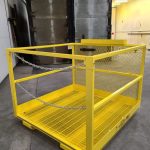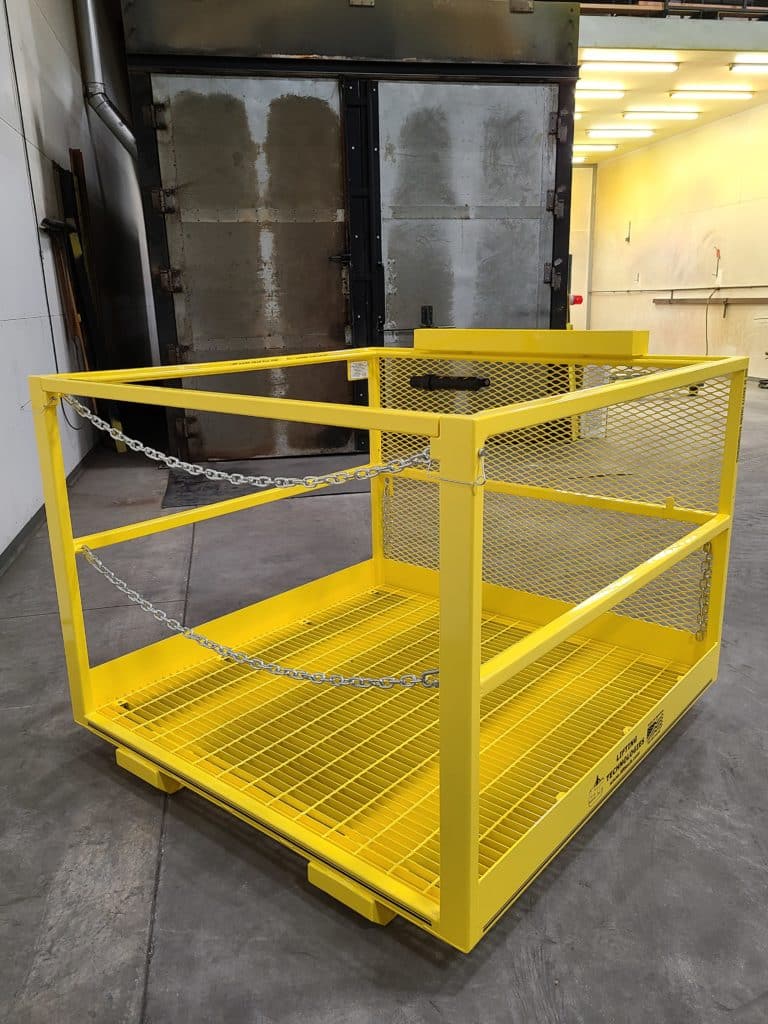Understanding Forklift Man Baskets: A Game Changer for Industrial Worksites
The Evolution of Forklift Attachments: From Basics to Advanced Solutions
In modern industrial environments, efficiency and safety are paramount. Forklifts have long been the backbone of material handling, but the necessity for advanced accessories to improve operational capacity has led to the emergence of specialized tools, one of the most critical of which is the forklift man basket. Originally, forklifts were equipped primarily for the transportation of materials. However, as workplaces evolved and the demand for versatile solutions grew, the concept of lifting personnel safely emerged. These baskets allow workers to elevate to high locations with the forklift as a means of access, a significant leap forward from traditional ladders and scaffolding, which posed substantial risks. The introduction of man baskets brought about improvements not only in safety but also in productivity, as tasks could be performed from higher elevations without the cumbersome setup of conventional scaffolding. Today, advanced design features, safety protocols, and compliance with regulations have further refined these attachments, ensuring they are a game changer on worksites across industries.
Why Forklift Man Baskets Are Essential for Safety Regulations
Regulatory compliance is non-negotiable in any workplace, particularly those involving elevated work conditions. Forklift man baskets are designed to meet strict safety standards, making them indispensable for any operation that requires personnel to work at height. The Occupational Safety and Health Administration (OSHA) and similar organizations globally have established regulations that govern the use of aerial lifts and personnel platforms, emphasizing the importance of equipment that minimizes fall risks. Forklift man baskets are engineered with guardrails, safety harness attachment points, and slip-resistant surfaces to promote a secure working environment. Moreover, they are built to severe load-bearing specifications, assuring employees can work confidently at elevations that were previously deemed hazardous. By integrating man baskets into their operations, businesses can not only enhance safety for their workers but also reduce the potential for accidents and the associated liability, ensuring that they meet and often exceed industry standards.
Choosing the Right Forklift Man Basket: Factors That Matter
Weight Capacity and Design: Tailoring to Your Needs
When selecting a forklift man basket, understanding weight capacity and design is crucial to ensure safety and efficiency. Each model is designed to handle a specific weight load, including the operator and necessary tools. It is critical to assess the intended usage frequency and scenarios. Heavy-duty baskets are ideal for industrial environments where multiple workers or heavy tools may be involved, while lighter baskets may suffice for intermittent tasks. Additionally, design plays a pivotal role. Features such as safety harness points and enclosed platforms are essential for higher work environments. The wider platform provides better stability, which can be even more critical when navigating uneven surfaces. Furthermore, customization options allow businesses to tailor man baskets to their specific application needs, possibly including modifications for added safety measures, bespoke access points, or integration with existing workflows. A qualified supplier will usually provide detailed guidance to ensure the right type is selected based on operational demands.
Material Matters: Steel vs. Aluminum – Which Is Best for You?
Choosing the right material for your forklift man basket can significantly impact durability, weight capacity, and ease of transportation. Steel and aluminum are the two primary materials used in man basket construction, each offering distinct advantages and drawbacks. Steel man baskets are known for their strength and durability, ideal for demanding industrial environments or heavy lifting. They tend to be heavier, which could complicate portability, making them more suited for stationary applications or those requiring significant load handling capacity. Conversely, aluminum is lightweight, corrosion-resistant, and allows for more significant maneuverability, making it ideal for variable work sites, especially in outdoor applications where exposure to the elements may be a concern. However, while lighter, they may not bear as much weight as steel baskets. In making this decision, consider your operational needs, the type of environments you will be working in, and any specific weight requirements. Your choice in material can ultimately influence not only safety and compliance but also the overall efficiency of your operations.
Best Practices for Using Forklift Man Baskets: Maximizing Safety and Efficiency
Employee Training: The Key to Safe Operation
Education and training lay the foundation for safe operation of forklift man baskets. Even with the highest quality equipment, the safety of personnel relies heavily on their understanding of procedures and equipment functionality. Organizations should invest in comprehensive training programs that cover operation protocols, safety management practices, and emergency response strategies, taking into account the specific types of man baskets they will be using. Operators must be trained not only in the mechanics of using a forklift with a man basket but also in recognizing hazards associated with elevated work, such as wind conditions that may affect stability at height, proper securing of safety harnesses, and maintaining clear communication with ground personnel. Regular refreshers and additional training for different setups and potential emergencies are also critical. By fostering a culture of safety through education, businesses can ensure that employees are well-equipped to operate safely and efficiently while using man baskets, thereby promoting a safer working environment.
Inspection and Maintenance: Keeping Your Equipment Top-Notch
Regular inspection and maintenance of forklift man baskets are crucial for maximizing safety and operational efficiency. Industry standards typically recommend that employers conduct thorough inspections at least once a year. However, If equipment is used daily or in challenging environments, more frequent checks may be necessary to ensure all parts are functioning correctly and safely. Inspections should encompass a review of critical components such as safety harness points, guardrails, floor integrity, and lift mechanisms. Any signs of wear or damage should be addressed immediately, as neglecting maintenance can lead to catastrophic failures that jeopardize personnel safety. Additionally, keeping a log of inspections can not only help meet regulatory compliance but also support operational transparency should any incidents occur. Organizations should also establish a routine maintenance schedule that adheres to manufacturer’s recommendations, ensuring all components are serviced and kept in optimal operational condition. Consistent maintenance not only extends the lifecycle of your man baskets but also continuously promotes safety within your workplace.
Real-World Applications: Success Stories of Forklift Man Basket Implementation
Case Study: Transforming Warehouse Operations with Elevated Solutions
A vital case study illustrating the benefits of forklift man baskets can be seen in the operations of a large-scale logistics warehousing company. This warehouse moved a substantial volume of goods daily, with constant re-stocking and shelving procedures demanding elevated access to work efficiently. Prior to implementing man baskets, workers used ladders and scaffolds, which not only slowed productivity but also contributed to accidents and injuries. When they switched to forklift man baskets, significant changes were observed: workers could now easily access high shelves with a reduced setup time, leading to accelerated stocking processes and drastically reduced instances of falls and injuries. The flexibility provided by different designs of man baskets allowed for customized solutions for their unique challenges, significantly improving operational efficiency and employee morale. Consequently, this implementation not only ensured compliance with safety regulations but also showcased how the use of specialized equipment could transform workplace dynamics positively.
Industry Spotlight: How Construction Sites Benefit from Enhanced Mobility
Construction sites are dynamic environments that require versatility, efficiency, and absolute safety. With projects often running tight schedules, being able to access elevated workspaces swiftly can make a significant difference in meeting deadlines. Forklift man baskets provide an indispensable solution in construction, allowing workers to perform tasks at height with maximum mobility and safety. A notable example can be highlighted in a recent commercial building project where traditional scaffolding was replaced with forklifts equipped with man baskets. The ability to reposition the platform easily and streamline access to multiple areas while working on the upper stories led to a reduction in downtime. Furthermore, the immediate visibility and capability to share tools and resources reduced worker fatigue and enhanced collaboration on-site. Through the integration of man baskets in their operations, construction companies reported not only improved safety records but also timely project completion and significant cost savings, illustrating the substantial benefits these tools bring to such environments.










